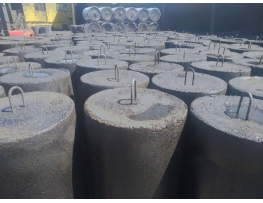Trapezoid electrode paste is a specialized material used in various industries, particularly in the field of electrochemistry and energy storage. It plays a crucial role in the manufacturing of batteries, fuel cells, and other electrochemical devices.
Composition
Trapezoid electrode paste is a composite material composed of several key components. The primary constituent is the active material, which varies depending on the intended application. Common active materials used in trapezoid electrode paste include graphite, carbon black, metal oxides, and conductive polymers. These materials possess excellent electrical conductivity and provide a high surface area for electrochemical reactions.
In addition to the active material, the paste also contains a binder, which is typically a polymer resin. The binder serves as a matrix that holds the active material particles together and provides mechanical strength to the electrode. Various types of binders can be employed, such as polyvinylidene fluoride (PVDF), carboxymethyl cellulose (CMC), and styrene-butadiene rubber (SBR).
Furthermore, trapezoid electrode paste incorporates conductive additives, such as carbon nanotubes or metallic powders, to enhance the overall conductivity of the electrode. These additives create a conductive network within the paste, facilitating efficient electron transport during electrochemical reactions.
Properties
Trapezoid electrode paste exhibits several crucial properties that make it suitable for various electrochemical applications:
High electrical conductivity: The presence of conductive materials, such as graphite and carbon black, ensures a high level of electrical conductivity. This property enables rapid charge and discharge rates, leading to improved energy efficiency.
Good adhesion: The binder component in the paste provides excellent adhesion between the active material and the current collector. This ensures uniform distribution of the active material on the electrode surface and enhances the overall performance of the electrochemical device.
Mechanical strength: The binder imparts mechanical strength to the electrode, preventing cracking or fragmentation during repeated cycling. It also enhances the structural integrity of the electrode assembly.
Chemical stability: Trapezoid electrode paste is designed to exhibit good chemical stability, resisting degradation in the presence of electrolytes, active materials, and other harsh conditions encountered in electrochemical systems. This property ensures the long-term stability and durability of the electrode.
Applications
Trapezoid electrode paste finds extensive use in a wide range of electrochemical applications. Some notable applications include:
Battery manufacturing: Trapezoid electrode paste is a critical component in the fabrication of rechargeable batteries, such as lithium-ion batteries, lead-acid batteries, and nickel-metal hydride batteries. It serves as the active material in the positive and negative electrodes, enabling the storage and release of electrical energy during charging and discharging cycles.
Fuel cells: Electrode paste is also utilized in the production of fuel cells, which convert chemical energy into electrical energy. It acts as the catalyst support material in the electrodes, facilitating the electrochemical reactions involved in the generation of electricity.
Supercapacitors: Trapezoid electrode paste is used in the construction of supercapacitors, which store electrical energy via electrostatic double-layer capacitance or pseudocapacitance. The high electrical conductivity and large surface area of the paste contribute to the enhanced energy storage capabilities of supercapacitors.
Electrowinning and electrorefining: In the metallurgical industry, electrode paste is employed in processes like electrowinning and electrorefining of metals. These processes involve the deposition or extraction of metals from electrolytes, and the electrode paste serves as the active material for these electrochemical reactions.
Product Specification:
| Carbon Electrode Paste | Specification | ||||
| CW-CP-1 | CW-CP-2 | CW-CP-3 | CW-CP-4 | CW-CP-5 | |
| Ash content % ≤ | 4,0 | 6,0 | 7,0 | 9,0 | 11,0 |
| Volatile content % | 12,0-15,5 | 12,0-15,5 | 9,5-13,5 | 11,5-15,5 | 11,5-15,5 |
| Bulk density g/cm3 ≥ | 1,38 | 1,38 | 1,38 | 1,38 | 1,38 |
| Compressive strength MPa ≥ | 18 | 17 | 22 | 21 | 20 |
| Resistivity µΩ·m ≤ | 65 | 75 | 80 | 85 | 90 |
| Elongation % | 5-20 | 5-20 | 5-30 | 15-40 | 15-40 |
Packing: briquettes are loaded in bulk or packed in big-bags; cylinders are steel strapped on wooden pallets and can be covered with plastic foil.
The Electrode paste specification can be customized according to customer’s unique furnace info.













